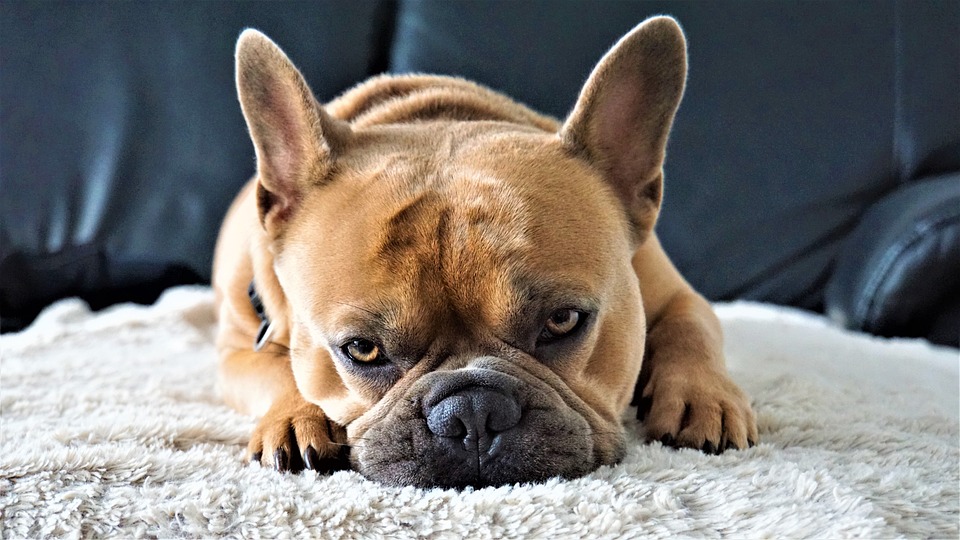# A Step-by-Step Guide: How to Train Your Dog to be Calm in the Car
## Introduction
Traveling with a nervous or anxious dog can be a challenging experience. Whether it’s a trip to the vet or a family road trip, a calm and relaxed canine companion can make the journey much more enjoyable for both you and your furry friend. In this step-by-step guide, we will explore effective techniques to help train your dog to be calm in the car, ensuring a stress-free and safe travel experience.
## Understanding the Root Causes of Car Anxiety
Before diving into the training process, it’s important to understand why your dog may be experiencing anxiety in the car. Some common reasons include:
1. **Motion Sickness**: Just like humans, dogs can also suffer from motion sickness, leading to anxiety or nausea when in a moving vehicle.
2. **Negative Associations**: If your dog has had a negative experience in the car, such as a car accident or a trip to the vet, they may develop fear or anxiety associated with car travel.
3. **Lack of Exposure**: Some dogs may simply be unfamiliar with car rides, leading to fear or discomfort.
## Preparing the Car for a Positive Experience
Creating a comfortable and secure environment inside the car is essential to help ease your dog’s anxiety. Follow these steps to prepare the car for a positive travel experience:
1. **Secure Travel Crate**: Provide your dog with a secure travel crate or harness to keep them safe and prevent any accidents or injuries.
2. **Familiarize with the Car**: Allow your dog to explore and get accustomed to the car while it’s stationary. Let them sniff around, sit in different seats, and gradually associate the car with positive experiences.
3. **Gradual Introductions**: Start by taking your dog on short car rides to familiar places, such as a nearby park, to help them associate car travel with pleasant outings.
## Implementing Desensitization Techniques
Desensitization is a process that helps your dog gradually become more comfortable with car travel. Follow these steps to implement desensitization techniques:
1. **Start with Short Sessions**: Begin by having your dog sit in the car for short periods with the engine turned off. Offer treats and praise to create a positive association with being in the car.
2. **Gradually Increase Time and Movement**: Once your dog is comfortable with stationary car sessions, start the engine and let it run for short periods. Gradually increase the duration and introduce gentle movement by driving short distances.
3. **Positive Reinforcement**: Throughout the desensitization process, reward your dog with treats, praise, and their favorite toys to reinforce positive behavior.
## Addressing Motion Sickness
If your dog suffers from motion sickness, there are several strategies you can employ to help alleviate their discomfort:
1. **Consult with a Veterinarian**: Seek advice from a veterinarian who may recommend medications or natural remedies to reduce motion sickness symptoms.
2. **Minimize Food Intake**: Feed your dog a light meal several hours before the car ride to avoid an upset stomach.
3. **Car Ventilation**: Ensure the car is well-ventilated to minimize odors and reduce the likelihood of nausea.
## Frequently Asked Questions (FAQs)
Here are some common questions dog owners have when it comes to training their dogs to be calm in the car:
**Q1: How long does it take to train a dog to be calm in the car?**
A1: The duration of training varies depending on the individual dog and their level of anxiety. It may take anywhere from a few weeks to several months to see significant improvements.
**Q2: Can I use sedatives to calm my dog during car rides?**
A2: It is best to consult with a veterinarian before considering the use of sedatives. They can advise on the appropriate dosage and whether sedatives are necessary for your dog’s specific situation.
**Q3: Are there any alternative methods to help calm a dog in the car?**
A3: Yes, there are alternative methods such as using calming pheromone sprays, playing calming music, or employing anxiety-reducing products like Thundershirts® that may help soothe your dog during car rides.
## Conclusion
Training your dog to be calm in the car is a gradual process that requires patience, consistency, and positive reinforcement. By understanding the root causes of car anxiety, preparing the car for a positive experience, implementing desensitization techniques, and addressing motion sickness, you can help your furry friend develop a calm and relaxed attitude towards car travel. Remember, always prioritize your dog’s safety and well-being, and consult with a professional if you encounter any challenges along the way. Happy travels!









